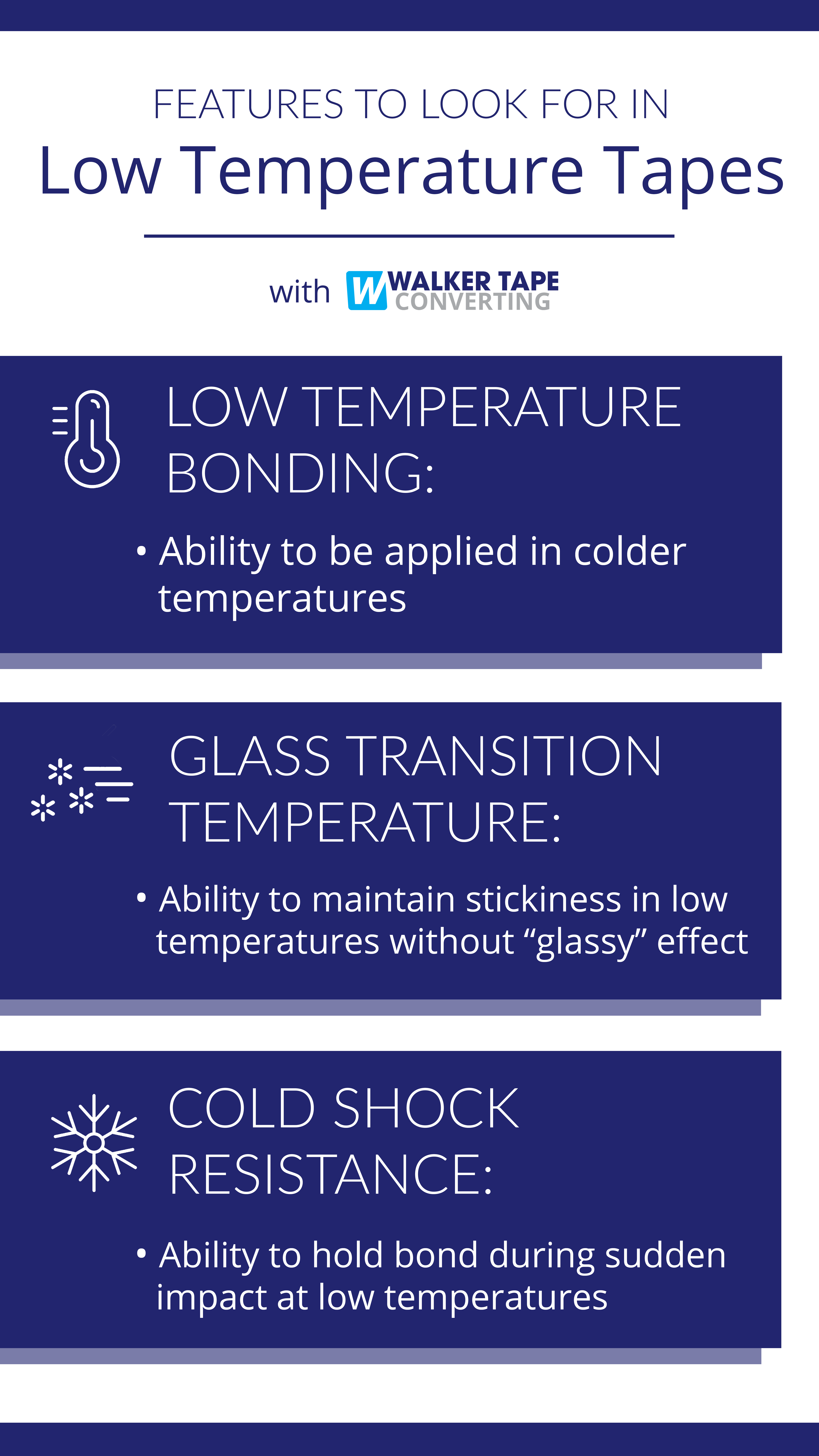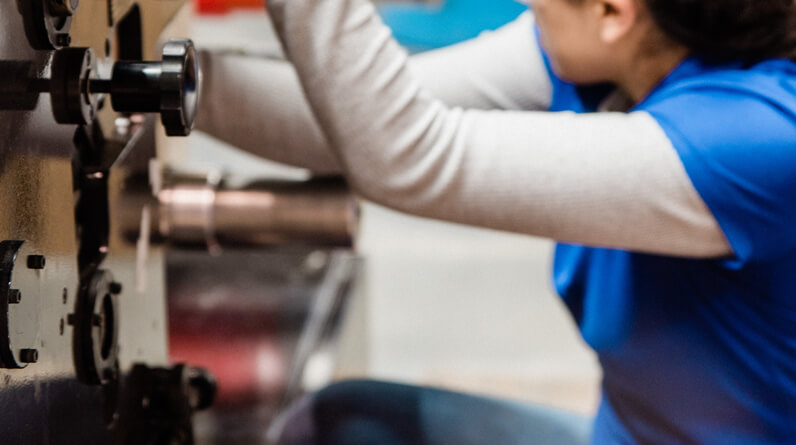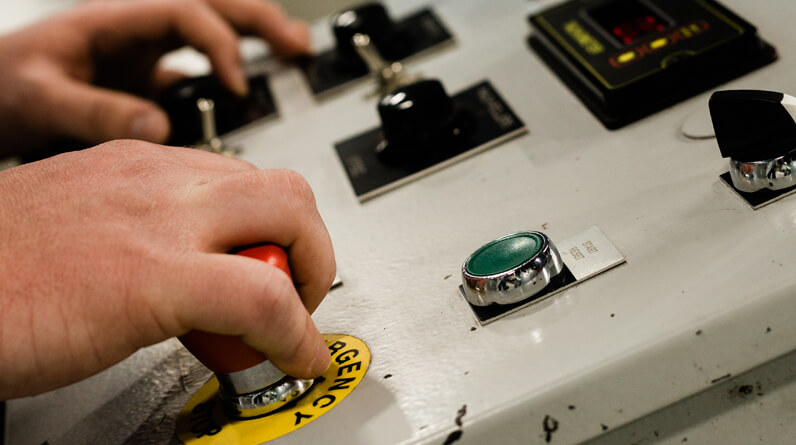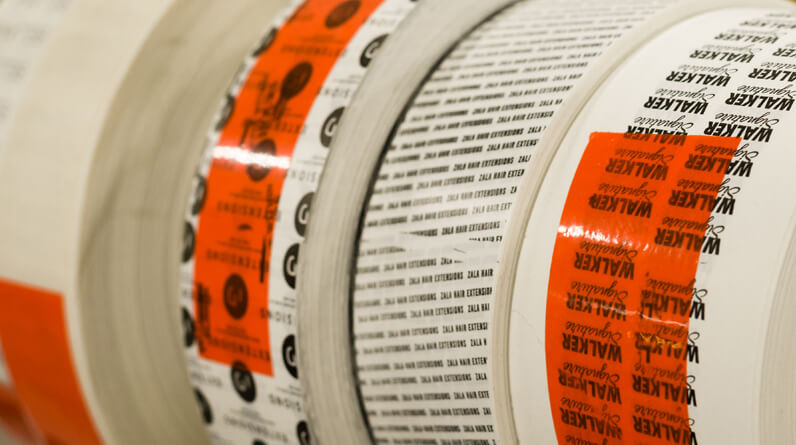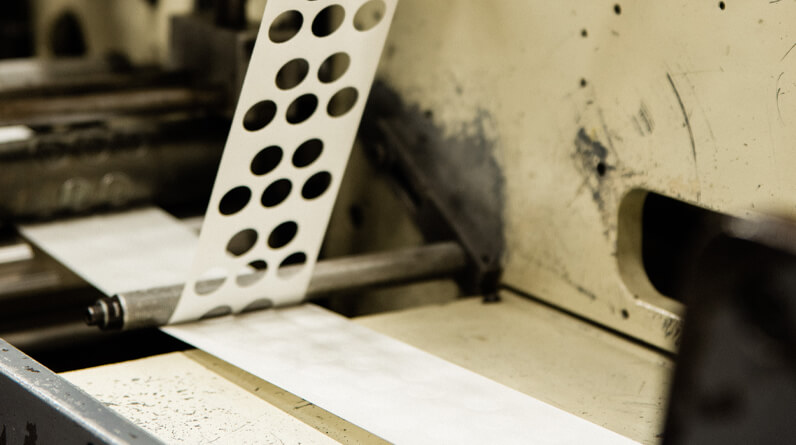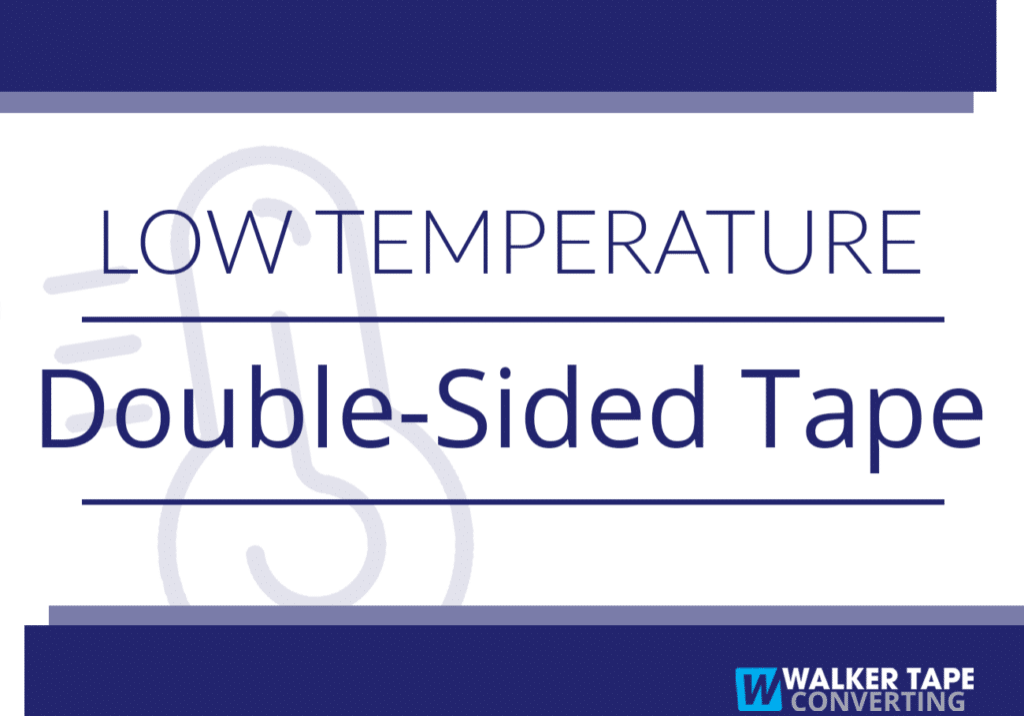
Making Sense of the Specs
Regardless of the manufacturer, when you’re on the prowl for solutions, you quickly find most specs on tape products emphasize high temperature ratings. A lot of applications require specific heat resistance and even performance interactions. Common examples include using tapes as heat shields or heat conductors.
However, plenty of applications also face challenges of cold temperatures. These could be consumer based with appliances (such as fridges and freezers) and consumer products (snowboarding goggles). But these challengers also include aerospace, transportation, and industrial applications exposed to extraordinarily frigid days, nights, water, and altitudes.
That said, with so many applications, it can still be hard to know what to look for when it comes to low-temperature tape options. At Walker Tape Converting, we’re here to make the research process easy. So, here are answers to a handful of common questions that come up often.
Also, if you have further questions, always feel free to reach out to one of our experts.
How does the cold affect tape?
The colder it gets, the harder a tape becomes. When tape becomes too hard, its adhesive ability can fail in what is commonly referred to as a “glassy” effect. Here’s why.
Tape is a balance between cohesion and adhesion.
- Cohesion is how well a tape holds itself together.
- Adhesion, on the other hand, is how well it holds to something else.
Softer adhesives have good adhesion but weaker cohesion. For example, water has great adhesive properties. Have you ever tried to dislodge the last ice cube from the bottom of a glass? But since it’s a liquid with hardly any cohesive strength, it doesn’t make for a great bonding solution.
In high heat, a tape can soften (or melt) past its cohesive threshold. In the cold, though, tape begins to harden. If it gets too cold, it becomes like glass, which holds together well while losing its sticky quality.
The takeaway here is that tape works best when you have the perfect balance between cohesion and adhesion, considering the demands of your project. A tape that holds up in low temperatures can resist becoming glassy and maintain its stickiness to a certain degree.
What’s the low temperature limit for most tape?
Even the heavy-duty all-weather tapes that you find marketed in the store for “extreme weather” usually are rated to 0°F at the low end. But in the industrial market, you find high-performance, general-purpose tapes that work down to -10°F.
What’s the lowest temperature I can apply most tapes in?
The conventional wisdom in the tape world is that you should avoid bonding below 55°F. This has been sound advice over the decades because it helps tape perform at its best.
You can find examples of manufacturers saying as low as 35-50°F. But even then, it’s understood that the best performance is still reached when applied at room temperature. (Keep reading below as we offer a notable exception to this rule.)
What are the lowest temperatures I should store tapes in?
You don’t want to store tapes in temperatures lower than 59°F. Even specialty low-temperature solutions have the best shelf life if stored in a consistent room-temperature range. These include the specialty options mentioned below.
The Lowdown on Truly Low Temperature Options Out There
What’s the cold weather limit for specialty low-temperature tapes?
If your project requires extremely low temperatures, we suggest that you work with an adhesive tape converter. When you do so, converters can find you solutions that have cold ratings all the way down to -40°F and slightly below. Considering our industry expertise, tape converters also pinpoint tapes with that perfect cohesion/adhesion balance to match your exact needs.
A ready, and memorable, example deals with aerospace. Stainless steel anti-chaffing strips are bonded to the wings of commercial jets with tape. You’re talking about a tape that’s subjected to intense air friction at the highest altitudes on earth. This comes with weather extremes of -65°F to 150°F over and over, several times each day.
What’s more, tape’s been the go-to for this application since 1984. Tapes handle the cold so well, various countries use them for Winter Olympics gear and machinery such as skeleton sleds and bobsleds.
Are there specialty tapes that can be applied in colder temperatures?
Yes! As we mentioned above, the customary advice is that tape performs best when applied at room temperature. However, a tape’s ability to bond at even lower temperatures is an innovative feature for some tapes coming out now.
You can find examples of tapes that can be applied on frost-free surfaces down to freezing 32°F temperatures.
What are some helpful features to look out for when researching low-temperature tapes?
There are three vital aspects to low-temperature tapes to keep in mind.
- Low Temperature Bonding: This is a tape’s ability to be applied in colder temperatures without compromising its ultimate performance.
- Glass Transition Temperature: This is the point where a tape hardens so much that the bond could likely fail.
- Cold Shock Resistance: This is a tape’s ability to hold the bond during sudden impact at low temperatures. Many applications benefit from this trait, such as trailer manufacturing. For example, shifting loads could suddenly impact side panels in cold weather situations.
Looking to try out a low-temperature tape? Request a free quote, and we can send you free samples to help you figure out the perfect solution.

